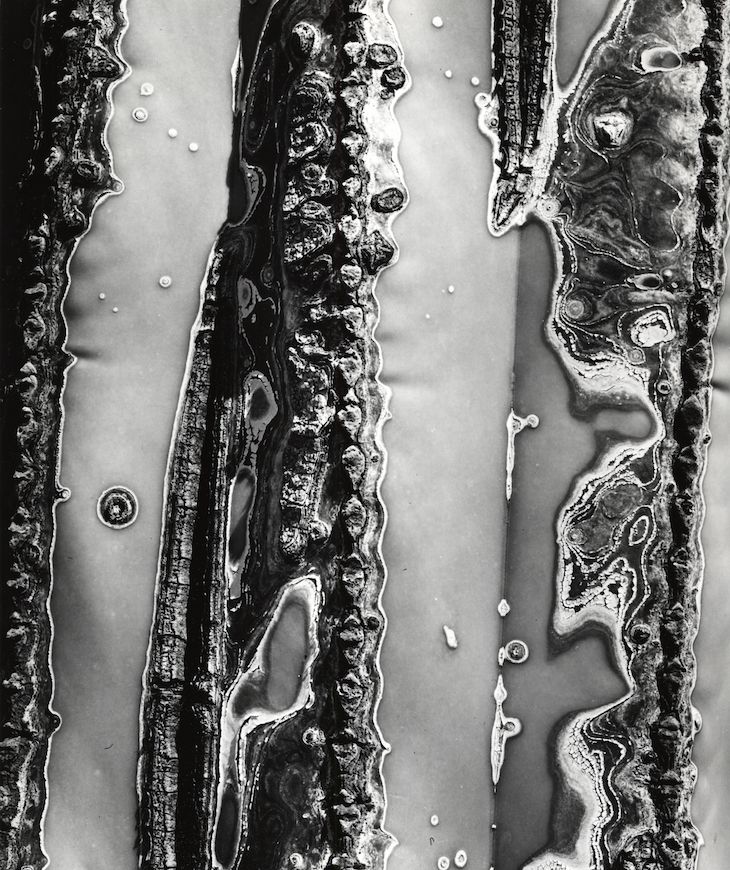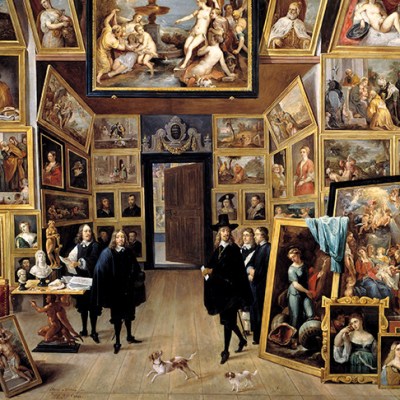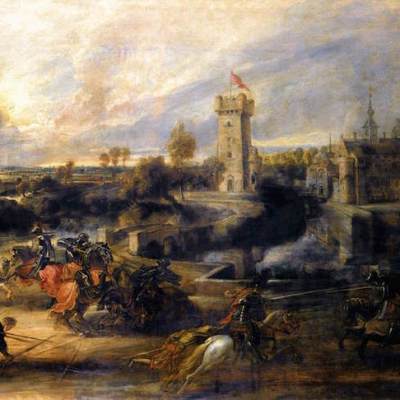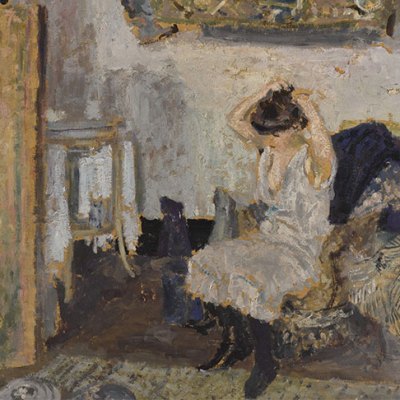A round-up of the best works of art to enter public collections recently
Musée du Quai-Branly, Paris
Christ as the Good Shepherd, the Preaching of St John the Baptist, and the Baptism of Christ (second half of 16th century), Juan Baptista Cuiris
When the conquistadors arrived in Mexico in the 16th century, the pre-Columbian art of plumería – using the multi-coloured feathers of birds of paradise to adorn vivid textiles – was soon adapted for the purpose of evangelism. This work, which is in exceptional condition given its fragile nature, depicts three scenes from the New Testament.
Barber Institute of Fine Arts, Birmingham
A Cavalry Travelling through a Wooded Landscape (1653), Salomon van Ruysdael
In his youth, Salomon van Ruysdael helped to pioneer the ‘tonal’ style of Dutch realist landscape painting, characterised by muted palette and humble subject matter; this work, with the bright orange of the soldiers’ uniforms and its low horizon, is one of the earliest examples of his late-career shift towards a more classical style. Allocated to the Barber through the UK government’s Acceptance in Lieu scheme, the work has never previously been exhibited in public.
A Cavalry Travelling through a Wooded Landscape (1653), Salomon van Ruysdael. Photo: © The Barber Institute of Fine Arts, University of Birmingham
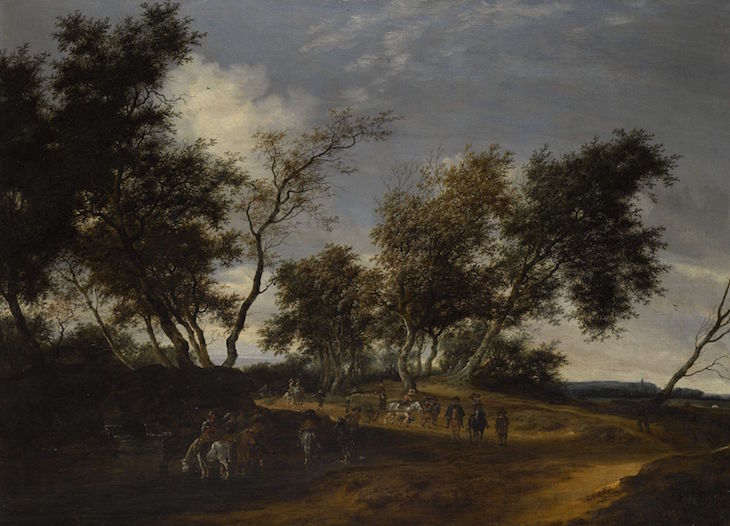
Van Gogh Museum, Amsterdam
Plate with Peaches (c. 1882), Gustave Caillebotte
Best known for his street scenes depicting modern life in Paris, Caillebotte also produced a series of less well-known still lifes during the 1880s. With its unusually high viewpoint and off-kilter crop, this painting – the first Impressionist still life in the museum’s collection – seems to look ahead to the Post-Impressionist works of Cézanne and Van Gogh. The museum has also recently acquired a letter from Van Gogh to the art critic Albert Aurier and a landscape painted by Gabriele Münter in 1909.
Plate of Peaches (c. 1882), Gustave Caillebotte. Photo: Van Gogh Museum, Amsterdam
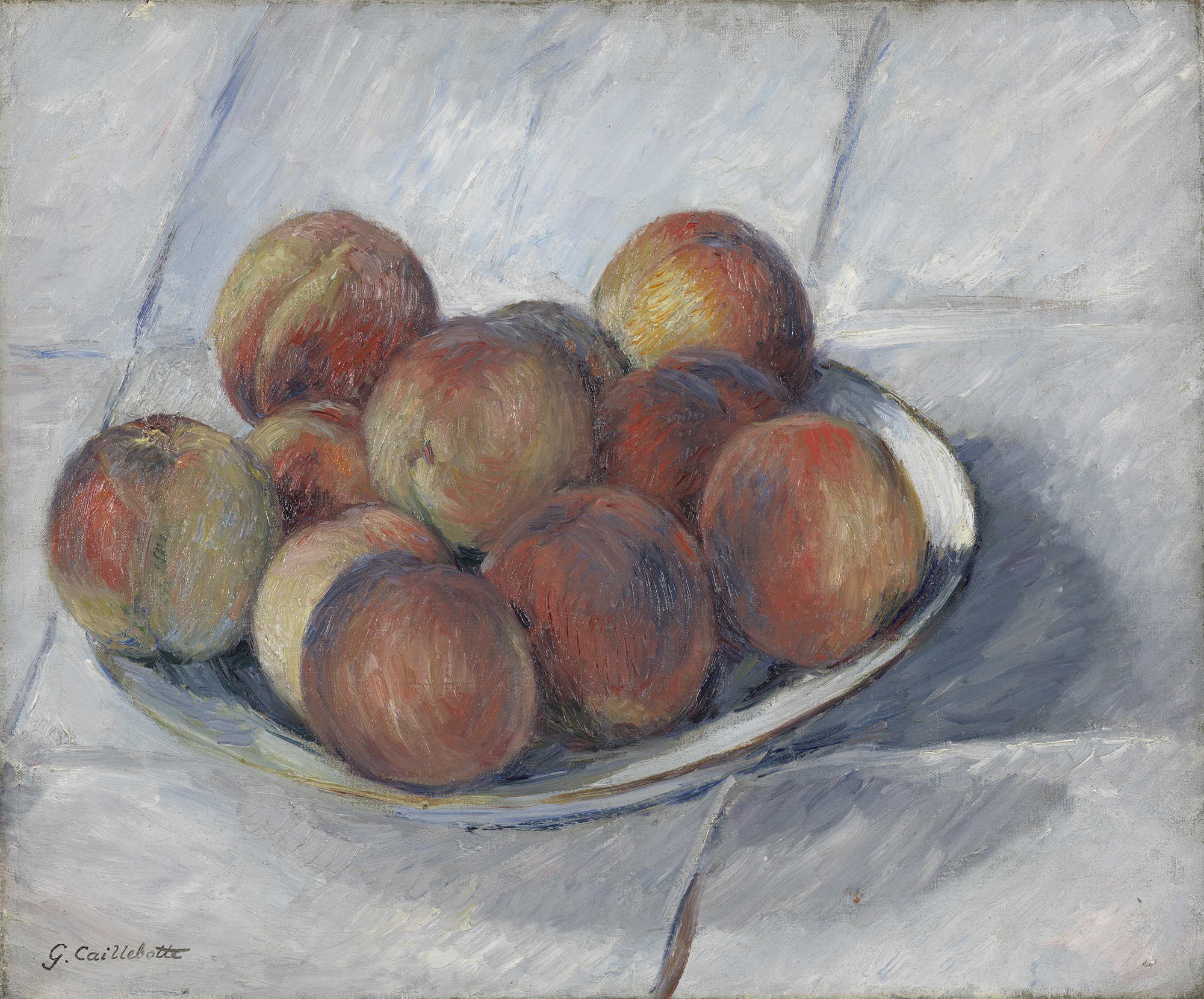
J. Paul Getty Museum, Los Angeles
Collection of ancient engraved gems
The collection of ancient Greek, Etruscan and Roman engraved gems amassed by the Italian art dealer Giorgio Sangiorgi in the 19th century included some of the most exquisite of all known examples; highlights of the 17 that the Getty acquired at auction in Christie’s New York include an intaglio portrait on black chalcedony of Antinous, favourite of the emperor Hadrian, of c. 130–38 AD and an amethyst ringstone of Demosthenes from the 1st century BC.
Intaglio portrait of Antinous (c. 130–38 AD), Roman. Photo: Christie’s Images Ltd
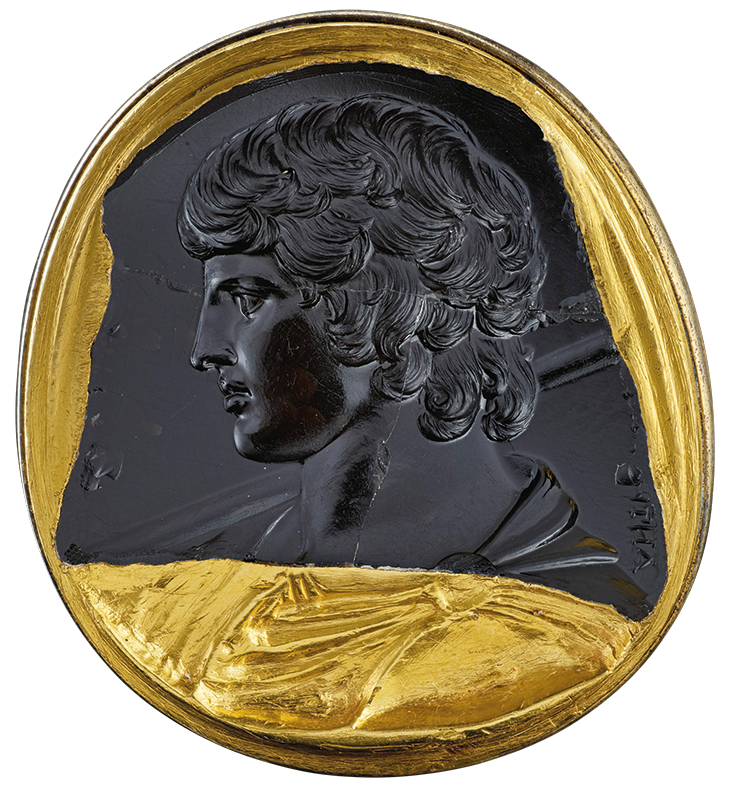
Museum of New Zealand Te Papa Tongarewa
Waterfall in Dusky Bay with Maori canoe (1775), William Hodges
In 1772 William Hodges, who had made his name as a scene painter for London theatres, was invited to accompany James Cook on his second voyage to the Pacific. He completed many oil paintings of the landscapes he encountered; this work, which depicts a group of Southern Maori seated in a waka (canoe) before a waterfall in Dusky Bay, has been purchased by New Zealand’s Te Papa from a private collection in England, where it was held for more than 200 years.
Waterfall in Dusky Bay with Maori canoe (1775), William Hodges. Photo: Museum of New Zealand Te Papa Tongarewa
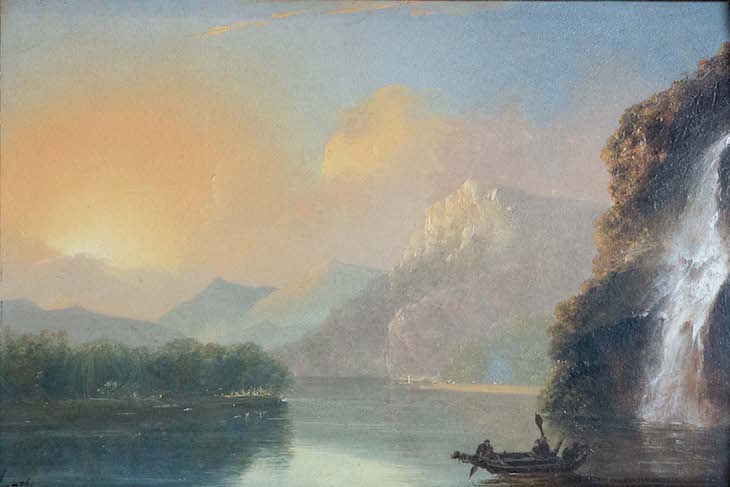
New Walk Museum and Art Gallery, Leicester
William Wollaston and his Family in a Grand Interior (1730), William Hogarth
This painting, which went on long-term loan to the New Walk Museum in 1943, was saved for the nation following a fundraising campaign by the City of Leicester Museums Trust. It has now been permanently allocated to the museum via the Acceptance in Lieu scheme. William Wollaston, a wealthy lawyer who would be elected Member of Parliament for Ipswich in 1733, commissioned the work after the death of his brother Charlton, whose bust sits proudly on the mantelpiece. Hogarth played a key role in popularising ‘conversation pieces’, such as this convivial scene of Wollaston’s extended family gathered together for a social event.
William Wollaston and his Family (1730), William Hogarth. Photo: Leicester Arts and Museums Service
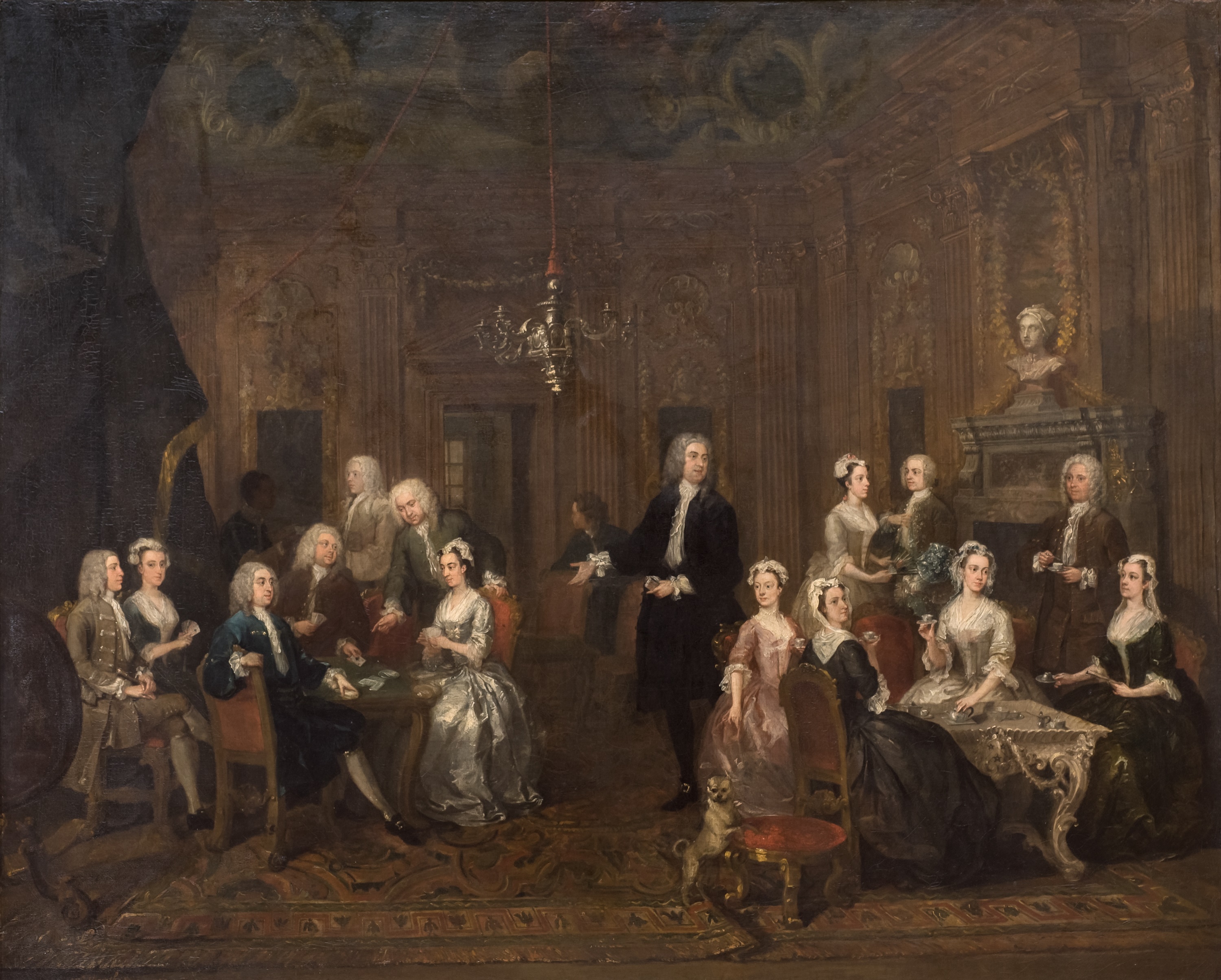
Block Museum of Art, Evanston
Photographs by Brett Weston
In the 1940s, as Abstract Expressionism was coming to prominence, Brett Weston – son of Edward Weston – experimented with the possibilities of abstraction in photography. Landscapes and flower studies were defamiliarised through the use of high contrast and close crops. This group of 50 prints, donated by collector Christian Keesee, ranges from early work of the 1930s to photographs taken in Hawaii in the 1980s, towards the end of Weston’s life.
Untitled (c. 1967), Brett Weston. Photo: © Brett Weston Archive
